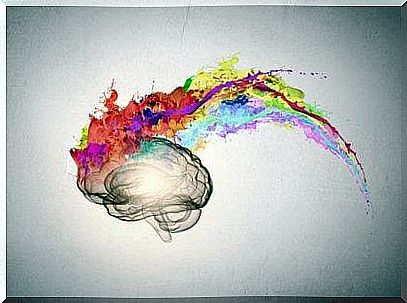The Brain Of An Optimist Works Differently

The brain of an optimist focuses, processes and understands reality in a different way. This ability makes it possible to see the rays of the sun where others only observe walls and closed windows. It is made possible by training in certain skills of concrete areas of the brain. We are referring here to openness, flexibility, resilience and better management of daily stress.
Is it true that the brain of an optimist is different from that of a pessimistic person? It should be noted that at the anatomical level (and what is expected of it), there will be no difference between one and the other. All human beings have the same brain structures and regions. The key is to activate and connect these zones with each other.
Differences in brain structure
Ultimately, our brains are a reflection of who we are, what we do, what we think, and how we think about life. We know, for example, that chronic stress associated with a high level of cortisol for a long period of time has certain consequences.
It generates changes in structures such as the hippocampus, amygdala or limbic system. Our memory fails us, our level of attention is reduced and our ability to make decisions is limited.
This sensational organ, which undoubtedly reflects the success of the evolution of our species, continues to present some limitations. It is not always as efficient as we would like it to be.
In fact, it is known that many people are genetically more predisposed to suffer from depressive disorders and anxiety. On the contrary, other people present attitudes that are more resilient and resistant to stress. This is due to a subtle combination of genetics, growth and education, then to the integration of personal tools of confrontation.
Through this article, we want to convey a very simple fact: the brain exhibits wonderful plasticity. Each of us is able to train him to develop a more optimistic approach. All while respecting our personal skills.

Is the brain of an optimist born or made?
Most of us know this type of people: the incombustible optimists. Those who seem not to see the difficulty when they have a problem, those whose positive attitude never disappears (even in the worst of times), those who have the powerful power to transmit their enthusiasm to us.
How do they do ? Did they come into the world with optimism already installed in their brain factory? Are they the result of years of training and positive psychology?
Studies conducted by King’s College London tell us something interesting on this question. The positive attitude is genetically determined at 25%. We therefore inherit this small percentage from our parents. Whether we like it or not, the rest is up to us, our personal attitude, our approach and our determination.
In fact, subject matter experts like Leah Weiss, a professor at Stanford and expert in mindfulness at work, tell us that there are indeed people who are naturally optimistic. However, much of this profile affects our behavior.
At some point, it will influence the attitude we take to deal with problems. It will also guide us on the mechanisms to apply at this time to bring about the change.

What is the brain of an optimist like, what makes it different?
Before we define the brain of an optimist, there are some aspects that we need to understand. First, optimism is not synonymous with happiness. An optimistic attitude is equipped with all the strategies and skills to improve the quality of life. Optimism would encompass, so to speak, all the skills that can facilitate happiness.
- Thus, this positive attitude reflecting the brain of an optimist occurs above all thanks to a skill: the ability to manage stressful factors of everyday life.
- We are not describing a personality type turning around in the face of the difficulties and obscurities of life. On the contrary, he sees them, accepts them and transforms them in his favor.
- This optimistic outlook allows him to better manage his feelings of sadness. Optimists are more resistant to disorders such as anxiety and depression and have more effective skills for building strong and fulfilling relationships.
The brain of an optimist and the left hemisphere
Dr. Richard Davidson, director of the Affective Neuroscience Laboratory at the University of Wisconsin, carried out a series of studies aimed at demonstrating a fact that was as intriguing as it was revealing. Daniel Goleman himself explains the results in one of his articles:
- When people are distressed, angry, have high anxiety, rage or frustration; the most active regions are the amygdala and the right prefrontal cortex.
- In contrast, profiles characterized by more positive, optimistic, enthusiastic and energetic emotional states demonstrate more intense activity of the left prefrontal cortex.
This research proves that positive emotions activate the left hemisphere more. There is then a lateralization. Dr. Davidson reports that “ after having carried out numerous studies on the link between activity in the frontal lobules and emotions; we have found that a large portion of people are optimistic. People with an unhappy, depressive or naturally anxious tendency show a greater activation of the right area ”.
To conclude, we can present a fact that Daniel Goleman evokes in the majority of his books and articles: we can all develop a more positive, open and flexible attitude. It would only be a question of learning to better manage stress, to manage our emotions to turn them in our favor. Let us focus our gaze and always direct it towards the horizon.










